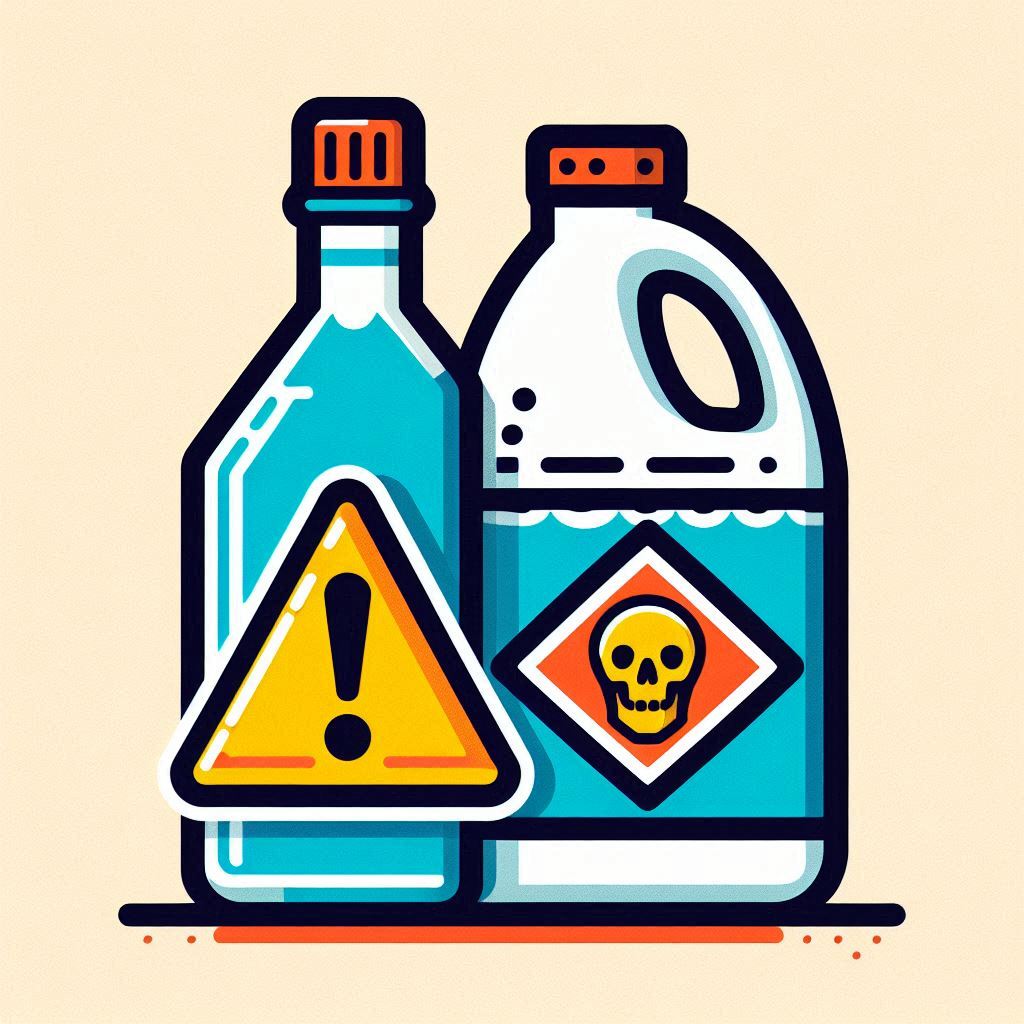Cleaning your home effectively often involves the use of powerful agents like bleach and vinegar. While these are both excellent for tackling tough messes, combining them can be dangerous. Understanding why these two cleaning powerhouses don’t mix—and how to use them safely on their own—is crucial for maintaining both a sparkling clean home and your safety.
Why You Should Never Mix Bleach and Vinegar
At first glance, bleach and vinegar might seem like a natural pairing. Bleach disinfects, and vinegar cuts through grime, so combining them should yield a super-clean surface, right? Wrong. Mixing these two creates a toxic chemical reaction that produces chlorine gas, a harmful substance that can irritate your eyes, nose, throat, and lungs. In high concentrations, it can even be life-threatening.
Here’s what happens:
Bleach contains sodium hypochlorite.
Vinegar, an acidic solution, reacts with the sodium hypochlorite to produce chlorine gas.
This gas, even in small amounts, can cause coughing, breathing difficulties, and watery eyes. Prolonged exposure can lead to more severe health issues.
For your safety, always use bleach and vinegar separately, and never mix them together—even in small amounts.
The Individual Benefits of Bleach and Vinegar in Cleaning
Though these two should never be combined, each is a powerhouse cleaner on its own. Here’s how you can use them effectively:
Bleach: The Ultimate Disinfectant
Bleach is highly effective at killing germs, viruses, and bacteria, making it an excellent choice for disinfecting your home.
How to Use Bleach Safely:
Dilution: Always dilute bleach with water. A typical ratio is 1 cup of bleach per gallon of water.
Applications: Use bleach solutions to sanitize high-touch areas like countertops, doorknobs, and bathroom fixtures.
Caution: Never use bleach on porous surfaces, as it can damage materials like wood and certain fabrics.
Bleach is ideal for deep cleaning tasks, but it’s important to ensure proper ventilation and wear gloves when handling it.
Vinegar: The Multi-Purpose Natural Cleaner
Vinegar, specifically white vinegar, is a natural and versatile cleaning agent. Its acidity makes it excellent for breaking down grease, mineral deposits, and soap scum.
How to Use Vinegar Safely:
Dilution: Mix vinegar with water for everyday cleaning. A 1:1 ratio works well for most surfaces.
Applications: Use vinegar to clean glass, remove hard water stains, and freshen up your laundry.
Caution: Avoid using vinegar on natural stone surfaces like granite and marble, as its acidity can etch the stone.
Vinegar is a go-to for those looking for a natural, eco-friendly cleaning solution that’s safe for most surfaces.
Tips for Safe and Effective Cleaning
Read Labels: Always check the manufacturer’s guidelines for cleaning products to avoid dangerous combinations.
Rinse Thoroughly: When switching between cleaning agents, rinse surfaces with water to ensure no residues are left behind.
Ventilation: Ensure your space is well-ventilated when using strong cleaning agents like bleach or vinegar.
Storage: Store bleach and vinegar separately to minimize the risk of accidental mixing.
Conclusion
Bleach and vinegar are both powerful cleaning tools when used individually, but their combination is a recipe for danger. By understanding their strengths and limitations, you can harness their cleaning power safely and effectively. Remember: keeping your home clean shouldn’t come at the cost of your health. Stick to one at a time, and you’ll enjoy a spotless and safe environment.

